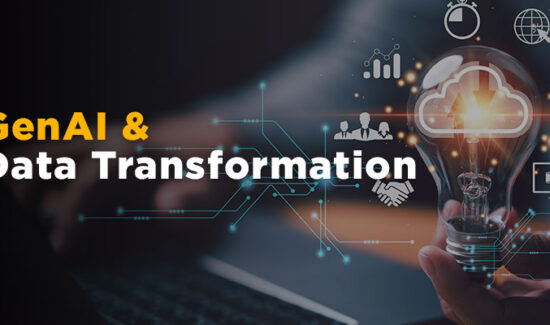Data Integration vs. Data Management; What’s the Difference?


Keeping up with the endless barrage of technology jargon can be a difficult task. Loosely-defined terms and industry-specific vernacular muddy the waters even further. It may seem like a matter of trivialization, but properly defining enterprise technology solutions and the associated terminology has real-world implications.
That’s where Solutions Review comes in. Our job is to scrub every available inch of relevant information on the web to bring you the leading library of content. It is our hope that these resources help you gain a better understanding of what is becoming an increasingly complex technology environment.
To that end, we’re going to take a deep dive into the world of big data in an attempt to uncover the similarities and differences between data integration and data management.
An Introduction to Data Integration
Without Data Integration, accurate analytics are impossible to achieve. Imagine trying to make a decision based on incomplete data. The less information available, the more likely a decision leads to an undesirable outcome. Now, multiply this challenge – decisions will now involve millions of dollars, hundreds of data sources, and terabytes of data. In order to steer a business correctly, integration tools need to handle a heavy burden.
Data integration is a combination of technical and business processes used to combine different data from disparate sources in order to answer important questions. This process generally supports the analytic processing of data by aligning, combining, and presenting each data store to an end-user. Data integration allows organizations to better understand and retain their customers, support collaboration between departments, reduce project timelines with automated development, and maintain security and compliance.
Cloud connectivity, self-service (ad hoc, citizen), and the encroachment of data management functionality are major disruptors in this market. As data volumes grow, we expect to see a continued push by providers in this space to adopt core capabilities of horizontal technology sectors. Organizations are keen on adopting these changes as well, and continue to allocate resources toward the providers that can not only connect data lakes and Hadoop to their analytic frameworks, but cleanse, prepare, and govern data.
These are three pillars of modern data integration software as outlined in our vendor map:
Enterprise Application Integration
Enterprise companies run an average of roughly 500 different applications. That number has undoubtedly increased over the last few years, but the salient point is that these applications are not designed to communicate with one another. This is where Application Integration comes into play.
In some EAI approaches, a single solution collects incoming data and pushes it out to relevant applications. This is known as a broker model. For example, if a salesperson closes a sale in the CRM, the EAI will push that information to accounts receivable to generate an invoice, payroll to generate a commission, and budget to bank that closed sale that quarter’s earnings.
The benefit of this approach is an automated workflow. Prior to EAI, the chain of events described above would involve a chain of emails or a sneakernet. At scale, this would translate to significant losses in terms of time and efficiency as workers manually transcribe and upload data. Therefore, an EAI solution can recapture a great deal of productivity.
Self-Service Data Preparation
Say that instead of automating a large series of tasks, a company wishes to analyze a large amount of data. Data analytics isn’t new, but its accessibility is. In the days of ETL, creating complicated analytics and data visualizations would require assistance from IT staff. By contrast, self-service data preparation is essentially what it says on the label—a way for business users to explore their data without needing assistance or specialized training.
This flexibility can sometimes be its own enemy. Inexperienced or overenthusiastic users can sometimes misuse the product in a way that draws erroneous conclusions, or slows down the application itself (for example, by trying to connect too many data sources to a single analysis platform). On the other hand, some solutions may be too simple to satisfy professional data scientists. When choosing a self-service data preparation solution, organizations should tailor their choice to the level of expertise available.
Integration Platform as a Service (iPaaS)
Most businesses operate some form of hybrid cloud, with a heavy emphasis on the public cloud. In fact, most business doesn’t go with a single public cloud provider. The average is 1.8 public clouds per business.
Data Integration across clouds is its own problem. Bottlenecks in integration could previously be solved by adding more storage and compute resources into the mix, but in the cloud, interoperability becomes a problem. Taking an application like a CRM and moving it into the cloud means that it’s much more difficult to connect its data to apps that are normally hosted on premise. Almost 20 percent are concerned about integration in the cloud, and it’s become enough of a problem that 40 percent of organizations have moved at least some data back on-premise.
The iPaaS market has emerged to take care of those concerns. Improvements in architecture, implementation, and standards allow these services to quickly process data between separate clouds, and between private clouds and legacy on-premise apps.
The next-generation of tools will offer a variety of ways for enterprises to split the demands of integration so that they may integrate data, applications, and business processes with partners and growing customer bases.
Data Management is Increasingly Vital
Data Management solutions meet at the intersection of big data and business analytics. They are available to oversee the development and execution of policies, practices, and procedures that manage the data needs of an enterprise.
An increasing number of enterprise companies now require dedicated data management tools for running complex analysis on disparate data. These demands are being filled with hybrid and cloud platforms that allow for flexible deployment, ingestion, integration, and security. As a result, providers have adopted technologies and techniques from vendors on horizontal markets, such as security and backup and recovery.
These are three pillars of modern data management software as outlined in our vendor map:
Data Management for Analytics
Data management for analytics solutions are complete software systems capable of managing data in one or more file management repositories. Oftentimes these solutions oversee analytical processing as well. The umbrella of analytical processing includes relational and nonrelational processing, machine learning, and the use of several programming languages. Different data models are available, including those that use XML, JSON, key-value, text, graph, and even geospatial schemes.
Traditional data warehouses incorporate a foundation for analytics initiatives that most companies adhere. There are data management products available for exploring new ways of managing and processing diverse data formats, both internally and externally. A comprehensive data management for analytics solution must be able to oversee a wide variety of data types. These data types range from interaction and observational data to the Internet of Things (IoT). However, there are many other types as well, including text, image, audio, and video.
Data Quality Tools
Data quality tools aim to help businesses keep their data clean and uncorrupted, so that a data warehouse or data analytics tool can properly analyze it. A company’s data quality can degenerate if the data is not regularly monitored over time.
Data quality pertains to the overall utility of data inside an organization, and is an essential characteristic that determines whether data can be used in the decision-making process. Data quality solutions are typically built atop features that allow businesses to match, clean, correct, validate, and transform data so that it can be analyzed by a database, data warehouse, or analytics system.
Depending on data use, keeping enterprise data clean and healthy is necessary to boost an analyst’s reporting or help with a new product release. However, to be sustainable in the long-term, data quality tools need to be able to support data management beyond standard data cleansing methods.
Master Data Management
Master data is made up of essential company-wide data points. This data typically provides insight related to the core of the business, including customers, suppliers, accounts, employees, goals, and operations. Decisions about what constitutes as master data are made by management teams and business stakeholders. Once these data standards have been met, users can analyze the data as they need to identify key metrics that reveal areas of concern so appropriate actions can be taken to improve operations.
As data points expand, master data management (MDM) becomes a critical part of the overall data managing spectrum. It’s for this reason that the majority of MDM deployments are made in medium and large companies. Outside of general data stewardship, common use cases for MDM deployments involve mergers and acquisitions, as well as maintaining regulatory compliance.
Before deploying MDM, organizations are unlikely to have a common approach to data storage and labeling. This creates a situation where the same values may have been applied to different data and vice versa. In order for stakeholders to come to a conclusion on what their master file should include, the data needs to be cleaned and stripped of redundancy. The data also has to be seen as relevant on an operational scale.
Data management software vendors concentrate on how enterprises organize diverse types of data. Choosing the right data management vendor can be a daunting task because there are various tools that make up the broader marketplace, and they depend on your specific environment and use cases.
Cue the process of seeking out, evaluating, choosing, purchasing, and deploying a data management solution. There’s no such thing as a one-size-fits-all approach when it comes to big data. Solutions come in a variety of flavors—ranging from data management solutions for analytics to operational database management systems. Each features a particular set of capabilities, strengths, and drawbacks. Choosing the right vendor and solution is a complicated process—one that requires in-depth research and often comes down to more than just the solution and its technical capabilities.
There is a topical overlap that exists between data integration and management. In the same breath, there are also key differences amongst the practitioners of big data in enterprise settings. While data management in all its forms are important aspects to an organization’s overall data strategy, it can sometimes be hard to know where one ends and the other begins. For more, or to compare the top data integration tools on the market, consult this resource.
























